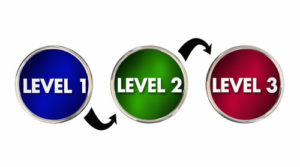The Different Levels of Chimney Inspections
Like every working part of a home, the chimney system is one that must be maintained properly in order to work properly. It should have the correct fuel, should be used properly, and should be assessed regularly.
CSIA Inspections
The Chimney Safety Institute of America (CSIA) along with the National Fire Protection Association (NFPA) recommend routine maintenance for a safe and efficient chimney system. This includes regular chimney sweeps as needed to keep an individual chimney system clean, and annual inspections to assess safety and function. CSIA inspections are the national standard to which chimneys are held. Officials will look for the CSIA signature for insurance claims, code enforcement, and home sales.
Three Levels for a Thorough Inspection
Because of the varied use of chimneys and fireplaces, not every chimney will need the same inspection. A chimney that has just endured a flue fire will need a more thorough assessment than a chimney that is used periodically and has never had a problem or change. This is why CSIA has three levels of inspections.
- Level One – This inspection is required annually when there have been no changes to the chimney system and it has been and will be used in the same way. The technician will assess all readily accessible portions of the system and needs no tools for this level of inspection. If a problem is recognized, there will need to be a more thorough examination.
- Level Two – This inspection is recommended when a hazard is discovered in a level one inspection. It is also required upon the sale or transfer of property, following a natural disaster that affects the home, or when a change is made to the chimney system. The level two inspection includes all that found in a level one inspection, in addition to an assessment of hidden portions of the system (attics, crawlspaces).
- Level Three – The most thorough inspection is recommended when a serious hazard is suspected and may include the removal of components to access those hazards. During this inspection the technician may use special tools to remove interior walls or components of the chimney in order to access the hazard, but only if required to reach the hazard. This inspection will determine what repairs must be made in order to use your chimney without putting your home and family in danger.
There are many hidden damages when you use a chimney and fireplace for home heating, but these dangers are decreased when the chimney system is properly maintained. Schedule an inspection today so that you don’t have to worry about a dangerous health emergency or accidental fire this winter.
Chief Chimney Services offers chimney inspections that include video scanning for added visibility. Our sweeps are CSIA certified, and experienced to catch even the slightest weakness in your chimney system. Call and speak to one of our sweeps today at 631-863-2460.

